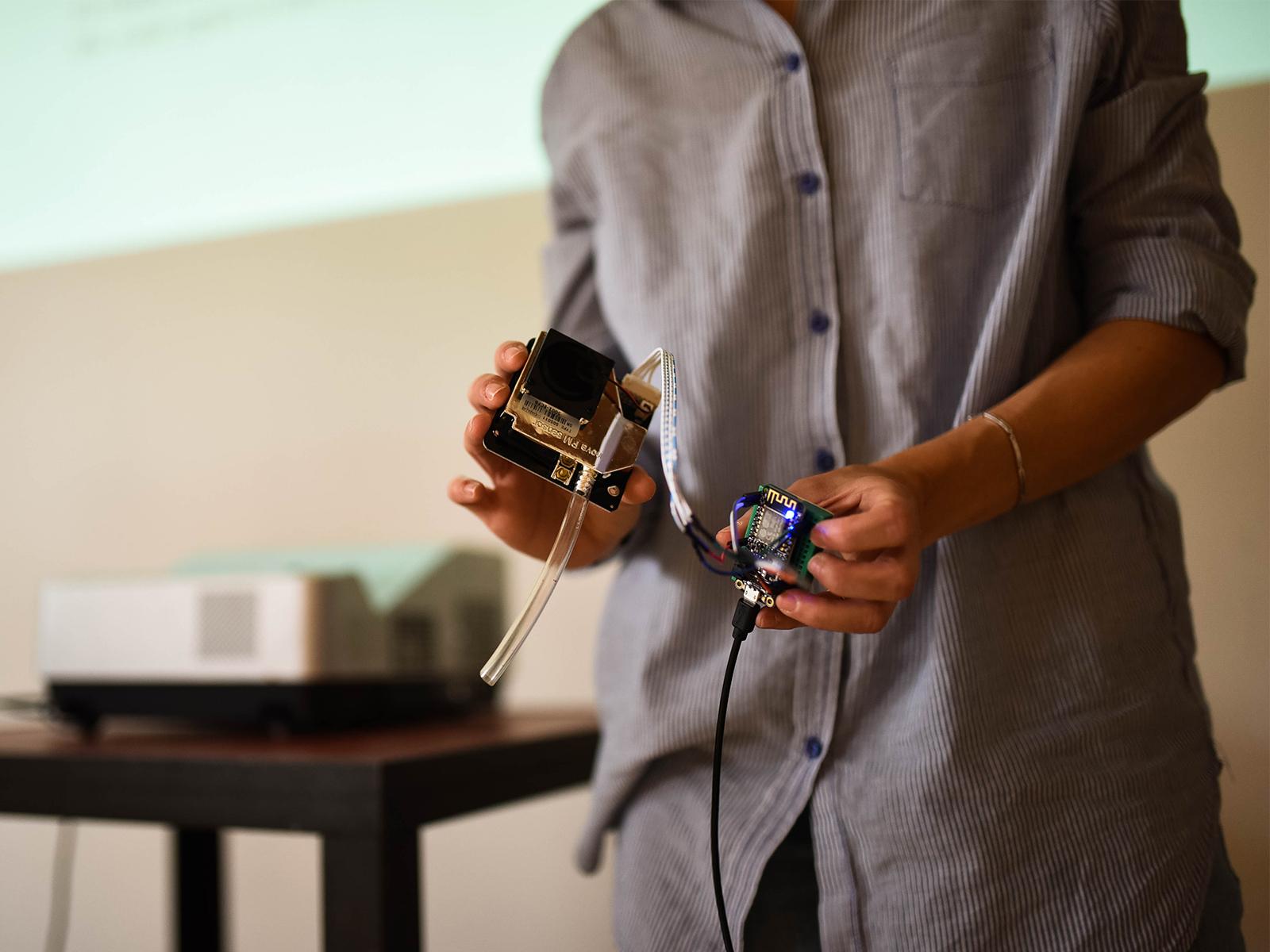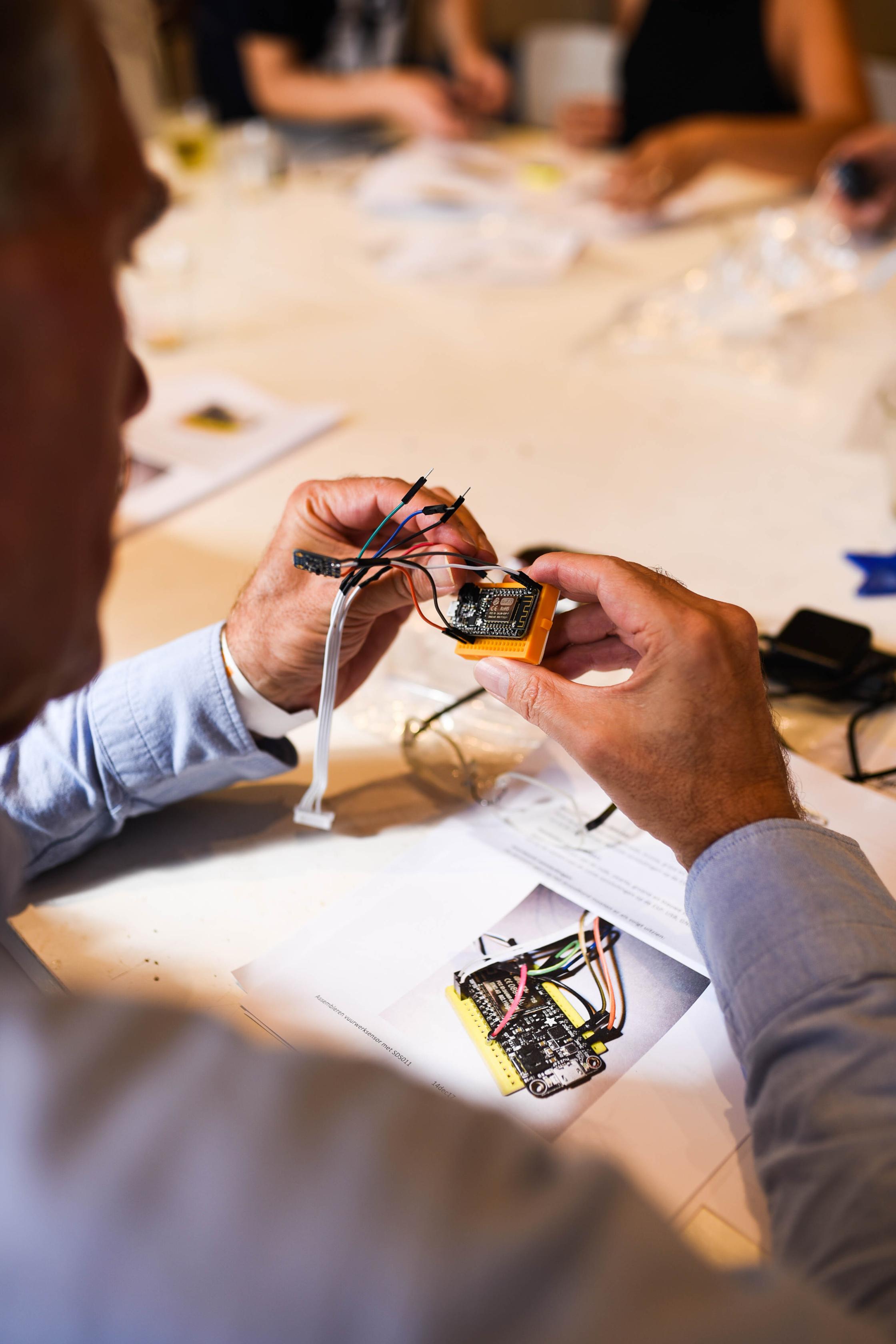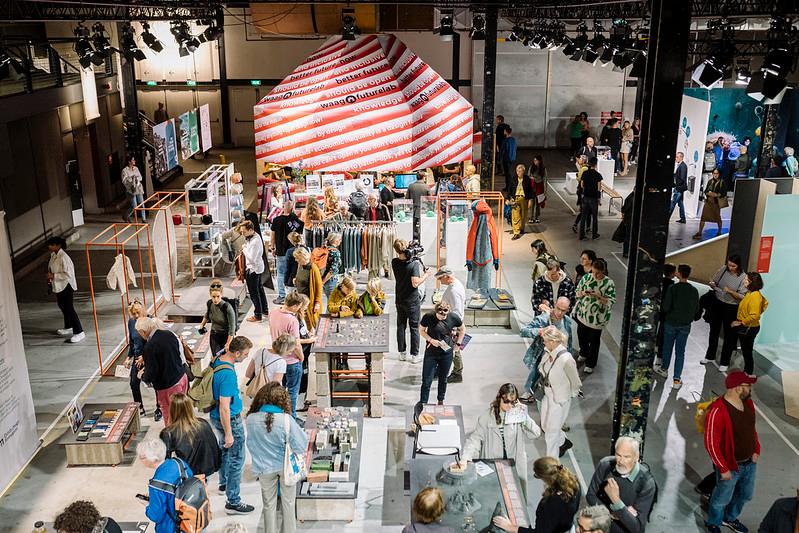After a helpful conference and interview series, the Transforming Citizen Sensing project took the next step in designing a sensing device by organising an open design sprint. Transforming Citizen Sensing is part of Open Next, a European project that seeks to bridge the gap between communities and companies by highlighting the value of open-source technology, in particular within the maker movement. The goal of the Transforming Citizen Sensing design sprint was to come up with a device that takes into consideration the interests of all parties involved in the pressing issue of air pollution. Because data on air quality gathered by the government is often insufficient or not adequately translated to fully inform citizens, it is important that citizens play an active role in the development of sensors and processing of data. Such citizen science not only contributes to existing measuring methods, but also empowers citizens to cause political change when needed, to protect their health and living environment. Just like the development of the sensing device is open source, the reporting of the design process should be transparent. Therefore, this blog gives insight into topics and outcomes discussed during the design sprint.
Participants
Over the course of four evenings, we (organisers Waag and Sodaq) were happy to welcome a diverse group of participants. The sprint was well represented by people from various cultural backgrounds, degrees of technical knowledge and levels of concern. We were joined by researchers from the Universities, concerned citizens, hardware developers from communities of sensor makers, and people from both the governmental and commercial field.
Next to the participants, we were accompanied by a group of experts who gave valuable feedback on the presented outcomes of the design sprint. The panel consisted of:
- Joost Wesseling: a scientist working for RIVM (the national institute for public health and the environment in The Netherlands) who has been involved in all sorts of projects about low-cost sensing devices.
- Teus Hegen: an internet expert currently living in an agricultural environment. Teus researches the air quality of this environment affected by surrounding bio-industry.
- Jan Harm Brouwer: a policy advisor for the province of South Holland and responsible for air quality and noise reduction. Jan also takes part in the health program Schone Lucht Akkoord, focussing on citizen science.
- Daniel Westerlijk: a tangible interaction designer living in Berlin. Daniel went to both art school and MIT, used to teach physical computing classes, and currently works on open-source hardware.
Program
During the first evening of the design sprint, we focused on the scenarios in which the sensing device would be used. This raised questions about the concerns that drive sensing activity and the desired impact in different settings. We mapped the criteria that should be kept into consideration during the development, and the different players involved in sensing. The second evening was all about the hardware and technical requirements the device has to meet. Through user stories, we described how the device should function in relation to the scenarios. We thereby defined technical aspects such as power, sensor type, identification of different use modes, and connectivity. On evening three we discussed data. How to collect, process and visualise data gathered by the sensing device? We concluded the third session by trying to connect all the considerations about the characteristics we figured the sensing device should have. During the fourth and last evening each group presented the outcomes of their work on creating a concept for a sensing device. It was very promising to see how the participants came up with creative ideas, and how the panel of experts was able to provide valuable feedback.
Outcomes
The participants were divided into three groups that each presented their concept for a sensing device. The question that was raised by all groups is: how do we create awareness among citizens about air pollution? An answer is to create a device that gathers human interest and keeps people involved. Most participants agreed that in order to make the sensing devices accessible, the costs have to be low and subsided by the government. This means in general that any ‘fancy’ aesthetics are to be left out, and it has to be a lean and efficient solution. When it comes to involvement and transparency, it was often said that hardware, software, and data should all be open-source. For the usability and adjustability of the device, two groups suggested a ‘lego-style’ interface, that can be tweaked by the end user depending on the scenario it is being deployed in. A much-heard distinction about scenarios was the difference of indoor and outdoor use of the devices. Evidently, a sensing device that is being used outdoors should be resistant against weather influences, and when not connected to a power source should consist of a long-lasting battery. A diverging scenario that was described by one of the groups is the use of a sensing device to measure the impact of air quality on objects, specifically heritage sites such as memorial statues. This is an interesting approach as most sensing projects focus on human health, while, in fact, poor air quality might as well cause decay to physical structures.
On the subject of hardware, sensor technology was extensively discussed. The desired sensor types ranged from PM (particulate matter) to temperature, sound, humidity, and vibration. In all cases the concepts made use of existing sensor technology. Also a variety of connectivity options were considered. Of which LoRa was much heard as a desirable connection, and WiFi being effective but often regarded as pricey. An alternative suggested by the expert panel was the use of the existing connectivity features of smartphones which are often widely available. As for data, all groups took account of the different forms, namely ‘raw’, ‘calibrated’, and ‘processed’. Of which the last category is most suitable for the end user, being the concerned citizen. This directly links to the visualisation aspect of data. The groups for instance suggested a screen with a map with or a ‘traffic-light’-style through LED indicators.
Verdict
The presentation of the third group took an approach that was best received by the panel of experts. They distinguished themselves by primarily aiming for systemic change. Their goal was to give citizens influence in governments and to improve communication between them. Communicating about data was at the core of the concept of the group. They proposed to be playful with data, and translate it into narratives people can relate to. For instance when talking about the relation between air quality and respiratory health, it helps to formulate a sentence such as “being exposed to this level of pollution will decrease my lifespan with x years”.
There seems to be a need for information to be translated in such a way that it moves people. As Joost Wesseling from RIVM formulated: “When there is only static data, there is no urgency to do something with it.” Only when people can relate to it, change will happen. An example was given about a campaign by Milieudefensie that caused societal fuzz and consequently political actions, with only a minimal amount of data points. As Wesseling says: “Data is good, more data is better, discussion about data is the best.”
Moreover, technical partner Sodaq showed their enthusiasm about collaborating with citizens in the way that was done during the design sprint. Sodaq wants to contribute to citizen science technology in an open source way. It is important to look at what is needed from every stakeholder and how to work together. It is not only about the sensing device and the hardware, but also about the people involved. This shows the relation and need for connecting communities of practice, that have affinity with technology, and communities of concern, that may have little technical knowledge, but surely are able to cause a discussion.
Open canvas
For the design sprint Waag created a framework that shows how to translate concerns and impact into hardware. In order to give other initiatives the opportunity to follow this route too, the canvas will become openly available soon on this page.


